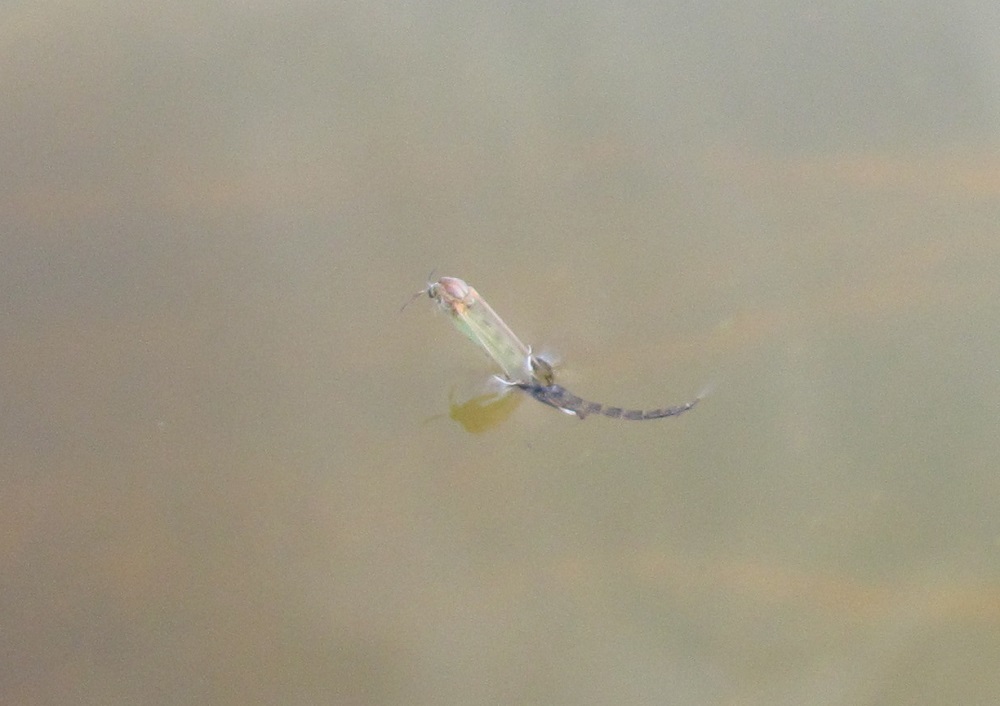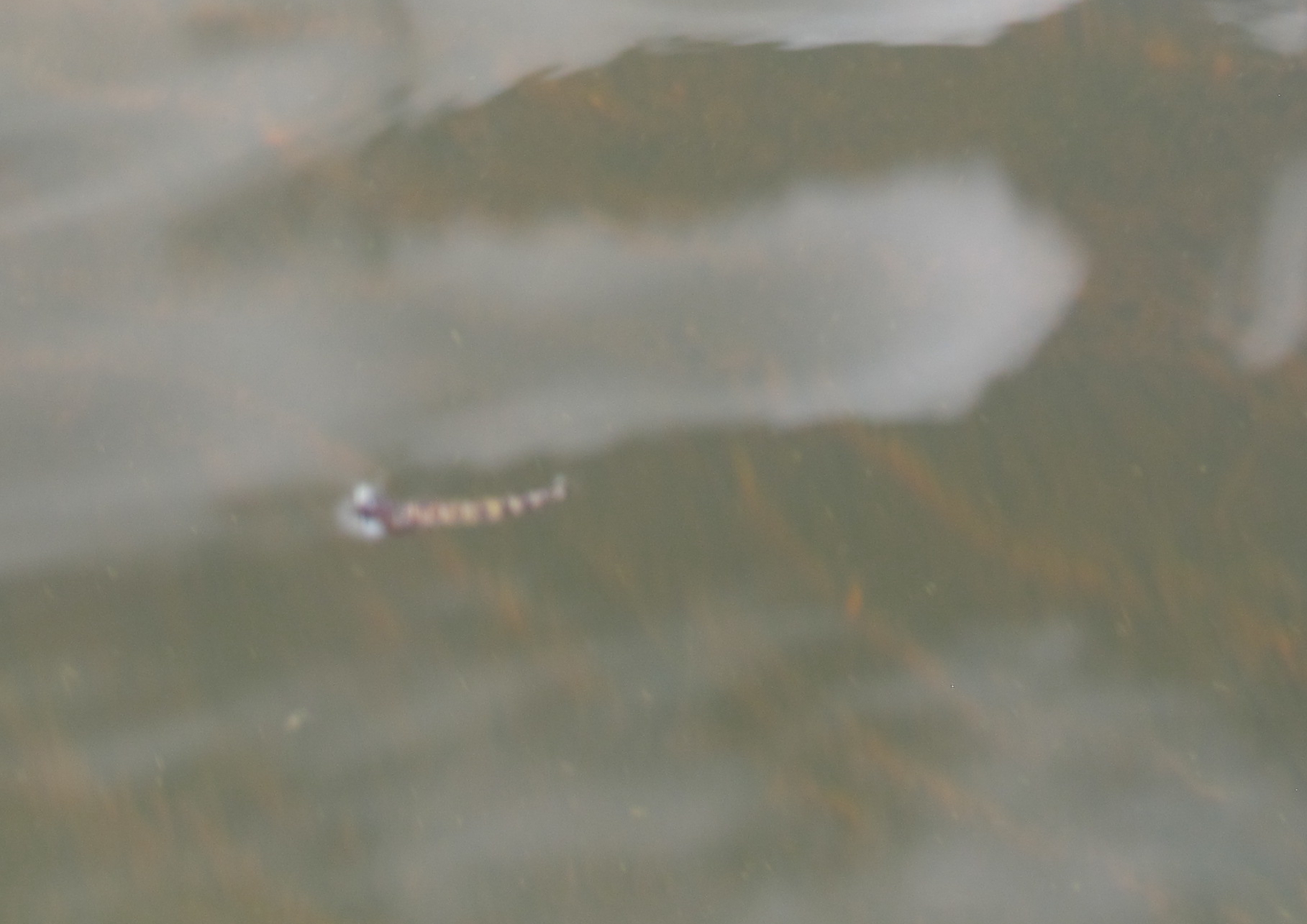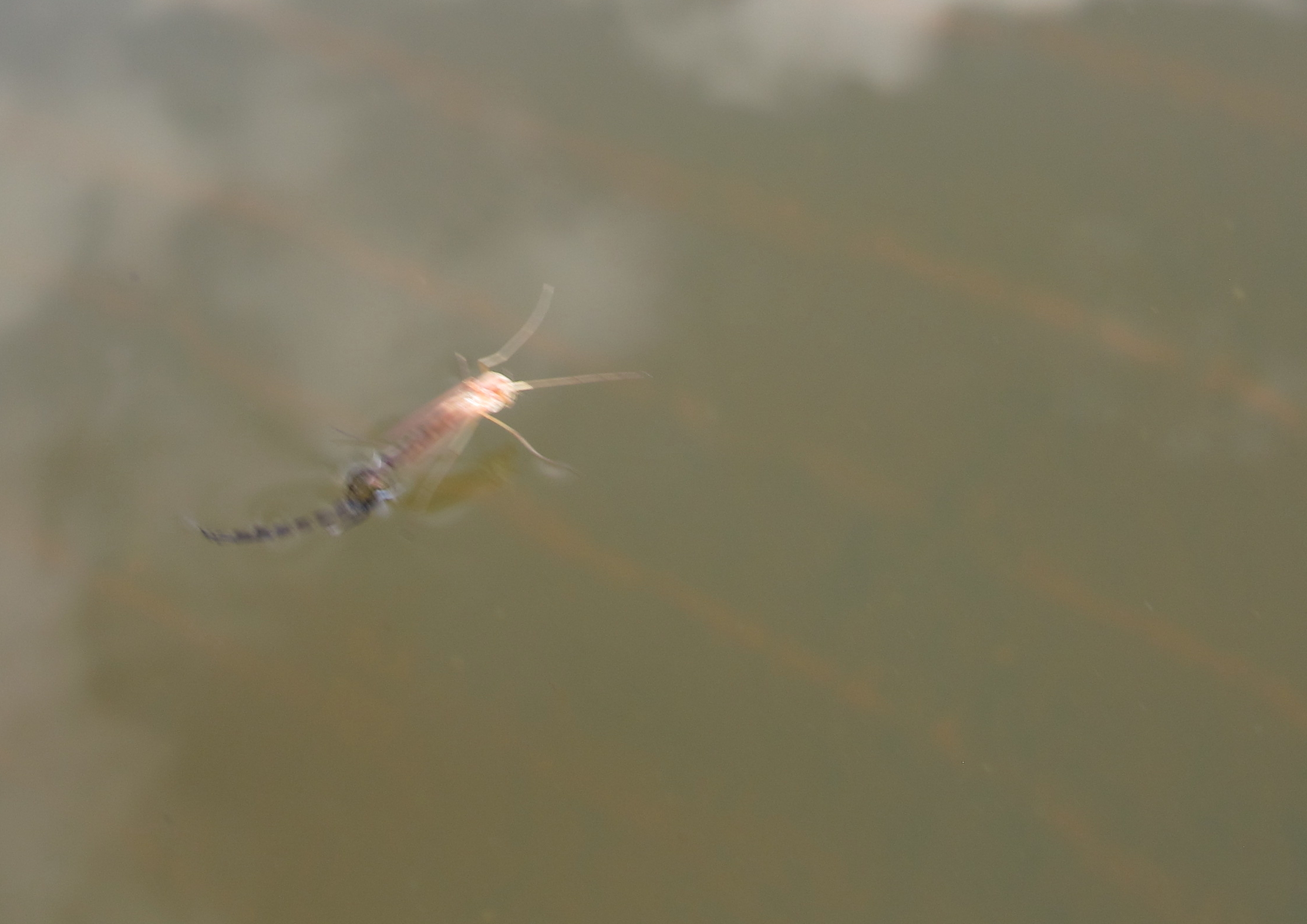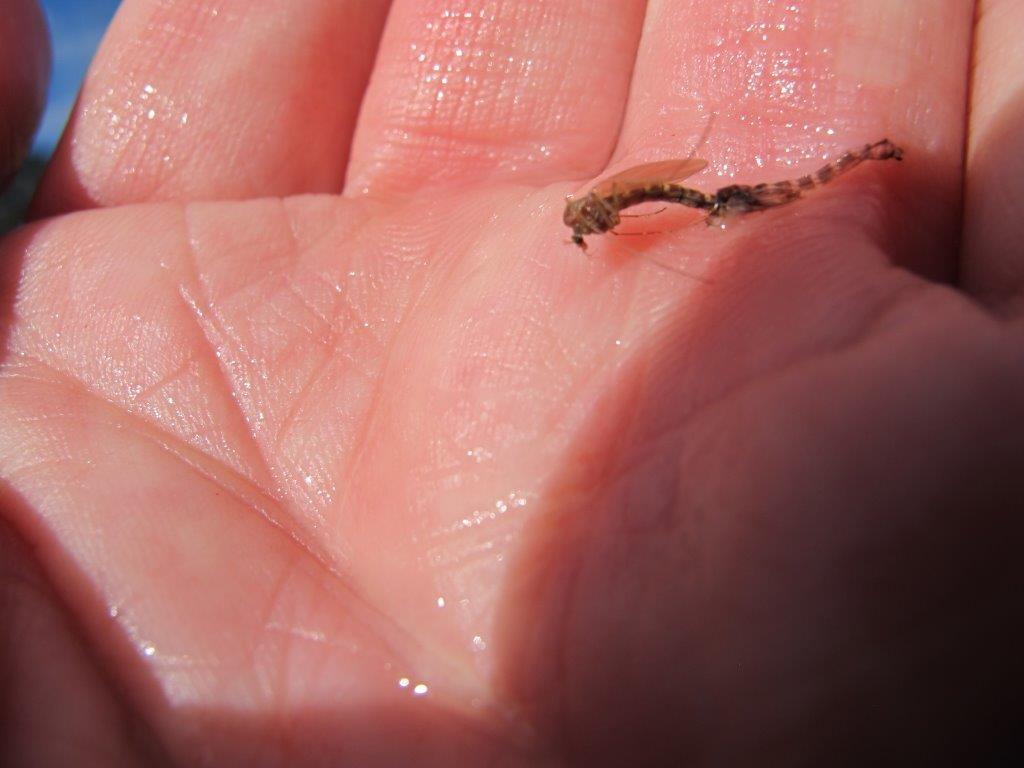
Midges (or strictly speaking chironomid) are often the only insect left to bring trout to the surface during the colder months. Right now, the midge are certainly busy here at Millbrook Lakes and on nearby public waters like Newlyn. Always a winter possibility, something seems to have really favoured them this year and in light wind partly cloudy conditions, they’re out and about right through the middle of the day.
 This 'medium midge' emerger is already drifting steadily. Pupa, emerger or adult, midge hardly ever stop moving.
This 'medium midge' emerger is already drifting steadily. Pupa, emerger or adult, midge hardly ever stop moving.With all this midge action, it’s probably a good time for a bit of a refresher. Three ‘types’ of midge are causing the fuss at the moment. First, the tiny ‘micro-midge’ are about in good numbers and they’re balling up at times (balling is like sticking a magnet under a scattering of metal fillings – the trout ignore the individual micro-midge as too small to filter, but happily chomp the conglomerates.) Although a mainstay of midge fishing at places like Eucumbene, in the past this type of midge activity was pretty rare on the central highland lakes. However last winter the balling midge were about often enough and so far, this late autumn/ winter is looking like a repeat. Fish with a small palmered dry like a Griffiths Gnat, maybe with a size 18 black or red buzzer off the back.
 A bit fuzzy, but there's no mistaking this big midge pupa's segmentation and gills, plus some orange beginning to appear as it nears the surface.
A bit fuzzy, but there's no mistaking this big midge pupa's segmentation and gills, plus some orange beginning to appear as it nears the surface.The second kind of midging dominating at present involves trout feeding on pupa and emergers of ‘medium’ chironomid about 10 mm long and olive to very dark. The trout rarely eat the fully emerged adults – too hard to notice and catch is my guess. Check out the pics for fly ideas – you want an obviously segmented body, white gills, and a splash or red/ orange to suggest the splitting shuck.
The third kind of midge is the big one – about 15 mm and accurately copied with a size 12 pupa or emerger/dry (yes, not all midges are midgets!) These puppies are in the minority at present, but the trout won’t knock them back and if they’re in the mix at all, it makes sense to fish imitations.
 Sorry, blurry again (it's hard photographing a tiny moving target with trout rising in the background) But note the orange 'splash.'
Sorry, blurry again (it's hard photographing a tiny moving target with trout rising in the background) But note the orange 'splash.'Watching the midge in the pics hatching the other day reinforced just how mobile the whole process is. The pupa wriggle and glide to the surface, and this day at least they broke through the film almost immediately. Then, even as they are emerging, they are already drifting and moving with the tiniest breezes and currents; even in apparently calm conditions. No wonder slow, steady movement is often so important to catch the trout’s attention. At the same time, remember the focal length of the trout will be miniscule (see ‘Scientific Angling’ in issue 3) – the midging fish are the proverbial toddlers following the Smartie trail. You need to make your fly move right in front of the trout – a few inches or so either side and forget it. So if you're going to use a dry and a pupa pattern, you need a dry fly you can see and move without sinking it. That’s why I like either a Claret Carrot or Orange Carrot with the pupa like a Milly Midge (with a slash of red or orange in the thorax) behind. The Carrots are only vaguely midge-like and can fail, but they have that orange splash, sit low, and can be pulled without sinking.
There’s obviously lots more to all this, but that’s a bit of crash course to go on with. Happy midge fishing!













